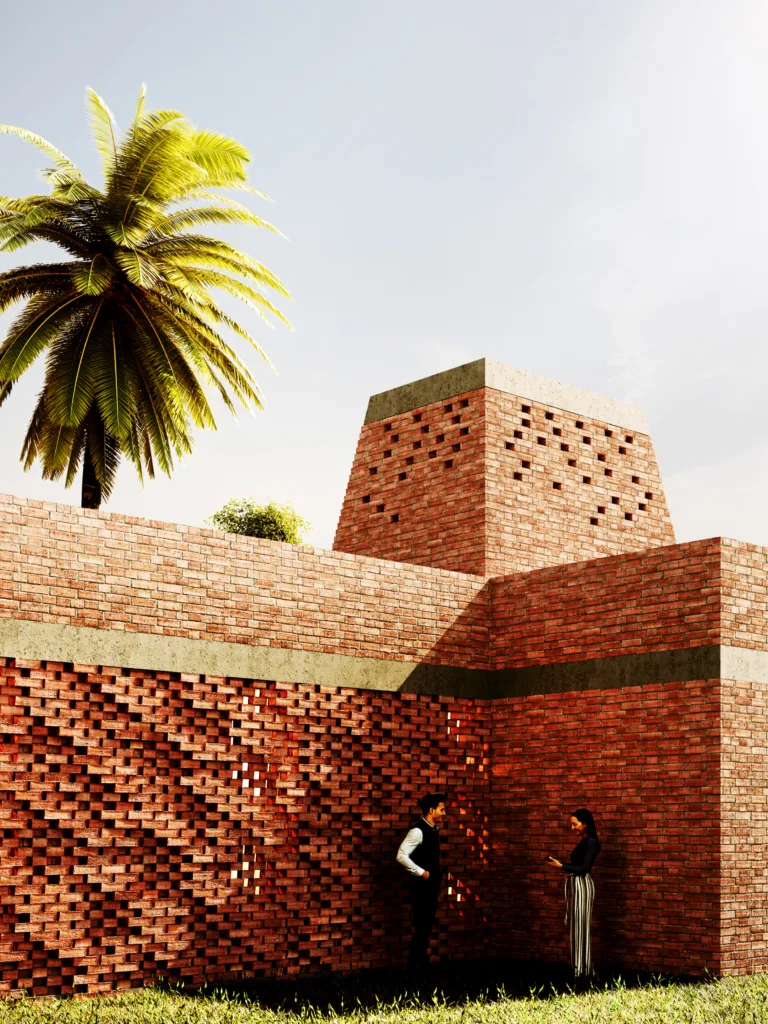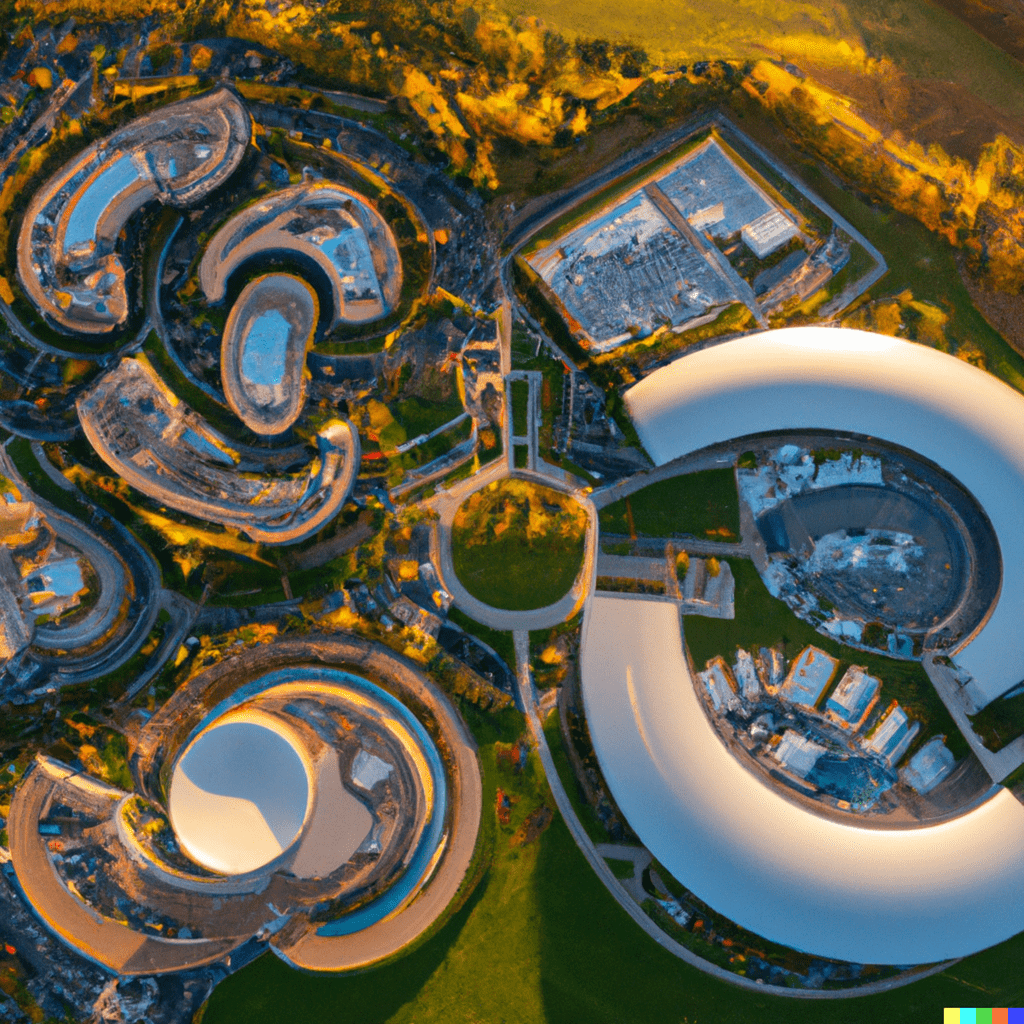TL;DR:
- Paul Howard Harrison is a computational design lead at HDR and a lecturer on AI and machine learning at the University of Toronto.
- He used his expertise to design an 8,500 sq. ft. healthcare clinic and courtyard in India through Design 4 Others (D4O), a philanthropic initiative.
- HDR has been using AI for design optimization and ideation, including the design of a hospital in Kingston, Ontario.
- The firm used AI as an engagement tool and to produce realistic images using DALL-E, an open AI system.
- The design of the iKure clinic was optimized for shade, circulation, and building size, resulting in a courtyard design.
- Megan Gallagher is curious to see the progression of AI as a design tool, while Harrison speculates it will take time to perfect the tool for larger projects.
- HDR’s focus is on making AI accessible and doable for its projects, such as the Baruipur Clinic.
- HDR focuses on projects that have the potential to make a significant impact on their communities and have the best chance of being built.
- Jason-Emery Groën is realistic about the unpredictability of project delays in underdeveloped markets, explaining that the construction of the iKure hub may take until 2024.
Main AI News:
Paul Howard Harrison has been a seasoned expert in the field of Machine Learning and Performance Optimization for years now. His expertise has been a valuable asset to HDR, where he serves as a Computational Design Lead, utilizing Artificial Intelligence (AI) to enhance the company’s design work. Furthermore, he is a lecturer at the University of Toronto, imparting his knowledge on AI and Machine Learning to the next generation of architects, having earned his Master of Architecture from the same institution.
Harrison’s passion for computational research and data-driven design resulted in the creation of a magnificent 8,500 sq. ft. Healthcare Clinic and Courtyard in Baruipur, West Bengal, India. This project marked his debut with Design 4 Others (D4O), a philanthropic initiative that operates through HDR’s architecture practice, providing architects with a platform to make a positive impact on underprivileged communities.
In India, the doctor-to-patient ratio is alarmingly low, with fewer than one doctor per 1,000 people, in comparison to the United States, which boasts a ratio of over 2.5 doctors per 1,000 people. The design of the Baruipur Clinic was created for iKure, a tech-savvy and socially responsible organization that provides healthcare services using a hub-and-spoke model.
The clinics, referred to as hubs, reach out to patients through local healthcare workers known as spokes, who have been trained to monitor, track, and gather patient data. The hubs and spokes are interconnected through iKure’s proprietary platform, the Wireless Health Incident Monitoring System. Currently, there are 20 hubs of varying sizes serving 9 million people across 10 Indian states, with a goal to expand the concept to 10 Asian and African countries and operate 125 hubs in the future.
D4O and iKure first came across each other in 2019 through Construction for Change, a Seattle-based non-profit construction management firm. The two organizations had previously collaborated on over a dozen projects, including a healthcare clinic in northwest Uganda, as documented in the August 11, 2020, episode of HDR’s podcast “Speaking of Design.”

HDR trained AI on a data set for different screening designs that could be made of brick, a local specialty. Rendering courtesy Design 4 Others. Source: Building Design+Construction
AI for Design Innovation and Collaboration
In an interview with Building Design and Construction (BD+C), Harrison, together with Megan Gallagher, a Health Planner at HDR and a D4O volunteer on the Baruipur project, discussed the utilization of AI in design.
Harrison recognizes that all designs produced have inbuilt biases. However, by training AI on smaller models, it is possible to control the datasets and biases.
From design optimization to early-stage ideation, HDR has been leveraging the power of AI to produce innovative and collaborative designs. In the design of a hospital in Kingston, Ontario, Harrison reveals that AI was used as an ideation tool, producing results that were even better than his own imagination. The firm has also used AI as a means of engagement, getting different client constituencies on the same page about a project’s mission.
DALL-E, an open AI system used to create realistic images, was also a topic of discussion during the interview. Harrison highlighted the diffusion model used by DALL-E, a random-field approach that produces generative models similar to the data on which the AI has been trained.
The design of the iKure clinic in Baruipur, West Bengal, India, posed unique challenges, as it had to support the hub-and-spoke delivery method and the potential for a second floor. Harrison wrote a machine-learning program that optimized for shade, circulation, and building size, resulting in a courtyard design similar to a courtyard house in Kolkata.
The treatment rooms were positioned at the back of the building, with strategically placed shading areas and chimneys inspired by local brick kilns for air circulation. The final aspect of the hub’s design will be the screening for security and ventilation, for which HDR has been utilizing AI by training it on a dataset of various screen designs made from brick, a local material specialty in the area.
Exploring the Potential of AI in Design
Megan Gallagher is curious to see the future development of AI as a design tool, while Harrison believes that while AI is faster for ideation, it will take time to perfect the tool for larger projects. HDR’s goal is to make AI accessible and feasible for its projects, as shown by the Baruipur Clinic, which will provide eye and dental care, X-rays, maternal and pediatric care, and telemedicine.
The clinic will serve about a half-dozen spokes and multiple villages, including remote islands in the Sundarbans Delta, where diagnostics can be accessed through portable devices. Jason-Emery Groën, Vice President and Design Director for HDR’s Kingston office, states that HDR focuses on projects that have the potential to greatly impact their communities and have a high chance of being constructed.
The firm is in discussions with iKure about assisting with its expansion plans, but Groën acknowledges the unpredictability of project delays in underdeveloped markets, explaining that the construction of the iKure hub may be delayed until 2024 due to the client’s land review, the pandemic’s impact on labor and materials, and longer-than-expected monsoon seasons.




Aerial rendering created by DALL-E of the campus. Rendering courtesy Design 4 Others. Source: Building Design+Construction
Conlcusion:
The use of artificial intelligence in the design of the iKure clinic in India is a significant development in the healthcare market, especially in underdeveloped countries where the doctor-to-patient ratio is alarmingly low. HDR, with its expertise in AI, is making it accessible and doable for its projects, focusing on those that have the potential to make a significant impact on communities.
The utilization of AI in design, from design optimization to ideation, has been leveraged by HDR to produce innovative and collaborative designs. The construction of the iKure hub, which was originally scheduled for completion in 2021, may take until 2024, but the firm is realistic about the unpredictability of project delays in underdeveloped markets and is in discussions with iKure about helping with its expansion plans.

